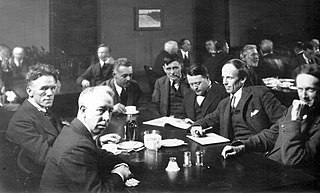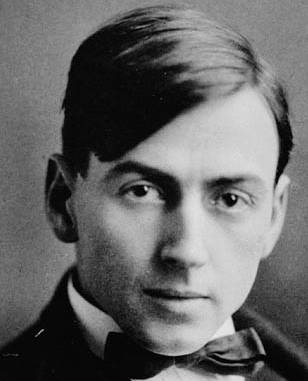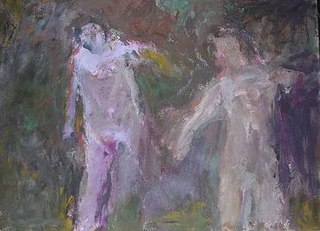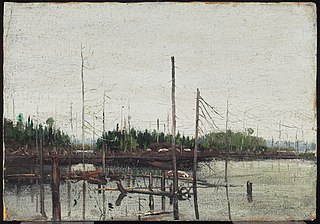
Post-Impressionism was a predominantly French art movement that developed roughly between 1886 and 1905, from the last Impressionist exhibition to the birth of Fauvism. Post-Impressionism emerged as a reaction against Impressionists' concern for the naturalistic depiction of light and colour. Its broad emphasis on abstract qualities or symbolic content means Post-Impressionism encompasses Les Nabis, Neo-Impressionism, Symbolism, Cloisonnism, the Pont-Aven School, and Synthetism, along with some later Impressionists' work. The movement's principal artists were Paul Cézanne, Paul Gauguin, Vincent van Gogh and Georges Seurat.

The Group of Seven, once known as the Algonquin School, was a group of Canadian landscape painters from 1920 to 1933, with "a like vision". It originally consisted of Franklin Carmichael (1890–1945), Lawren Harris (1885–1970), A. Y. Jackson (1882–1974), Frank Johnston (1888–1949), Arthur Lismer (1885–1969), J. E. H. MacDonald (1873–1932), and Frederick Varley (1881–1969). A. J. Casson (1898–1992) was invited to join in 1926, Edwin Holgate (1892–1977) became a member in 1930, and Lionel LeMoine FitzGerald (1890–1956) joined in 1932.

Thomas John Thomson was a Canadian artist active in the early 20th century. During his short career, he produced roughly 400 oil sketches on small wood panels and approximately 50 larger works on canvas. His works consist almost entirely of landscapes, depicting trees, skies, lakes, and rivers. He used broad brush strokes and a liberal application of paint to capture the beauty and colour of the Ontario landscape. Thomson is considered by many Canadians as the archetypal painter, and his later work has heavily influenced Canadian art – paintings such as The Jack Pine and The West Wind have taken a prominent place in the culture of Canada and are some of the country's most iconic works. His accidental death by drowning at 39 shortly before the founding of the Group of Seven is seen as a tragedy for Canadian art.

The National Gallery of Canada, located in the capital city of Ottawa, Ontario, is Canada's national art museum. The museum's building takes up 46,621 square metres (501,820 sq ft), with 12,400 square metres (133,000 sq ft) of space used for exhibiting art. It is one of the largest art museums in North America by exhibition space.

The Art Gallery of Ontario is an art museum in Toronto, Ontario, Canada, located in the Grange Park neighbourhood of downtown Toronto, on Dundas Street West. The building complex takes up 45,000 square metres (480,000 sq ft) of physical space, making it one of the largest art museums in North America and the second-largest art museum in Toronto, after the Royal Ontario Museum. In addition to exhibition spaces, the museum also houses an artist-in-residence office and studio, dining facilities, event spaces, gift shop, library and archives, theatre and lecture hall, research centre, and a workshop.

Alexander Young Jackson LL. D. was a Canadian painter and a founding member of the Group of Seven. Jackson made a significant contribution to the development of art in Canada, and was instrumental in bringing together the artists of Montreal and Toronto. In addition to his work with the Group of Seven, his long career included serving as a war artist during World War I (1917–19) and teaching at the Banff School of Fine Arts, from 1943 to 1949. In his later years he was artist-in-residence at the McMichael Canadian Art Collection in Kleinburg, Ontario.

Lawren Stewart Harris LL. D. was a Canadian painter, best known as one of the founding members of the Group of Seven. He played a key role as a catalyst in Canadian art, as a visionary in Canadian landscape art and in the development of modern art in Canada.

James Edward Hervey MacDonald (1873–1932) was an English-Canadian artist, best known as a member of the Group of Seven who asserted a distinct national identity combined with a common heritage stemming from early modernism in Europe in the early twentieth century. He was the father of the illustrator, graphic artist and designer Thoreau MacDonald.

The Jack Pine is a well-known oil painting by Canadian artist Tom Thomson. A representation of the most broadly distributed pine species in Canada, it is considered an iconic image of the country's landscape, and is one of the country's most widely recognized and reproduced artworks.
William Ronald Smith, known professionally as William Ronald, was an important Canadian painter, best known as the founder of the influential Canadian abstract art group Painters Eleven in 1953 and for his abstract expressionist "central image" paintings. He was the older brother of painter John Meredith (1933–2000).

Florence Helena McGillivray, also known as F H. McGillivray, was a Canadian landscape painter known for her Post-Impressionist style. Her family home was in Whitby, Ontario. She lived in Ottawa from 1914 to 1928. She was also a teacher. In 1916, on a visit to his studio, she encouraged Tom Thomson.

Painters Eleven was a group of abstract artists active in Canada between 1953 and 1960. They are associated with the Abstract Expressionist movement.
Harold Klunder is a Canadian painter.
Ian A. C. Dejardin is an art historian who was director of the Dulwich Picture Gallery in Dulwich, England. In August 2016 Dulwich Picture Gallery announced that he would be leaving to become chief executive of the McMichael Canadian Art Collection in Ontario in April 2017. He is married to Eric Pearson, his partner since 1987, and lives in Toronto, Canada.

Milton Resnick was an American artist noted for abstract paintings that coupled scale with density of incident. It was not uncommon for some of the largest paintings to weigh in excess of three hundred pounds, almost all of it pigment. He had a long and varied career, lasting about sixty-five years. He produced at least eight hundred canvases and eight thousand works on paper and board.

Tom Thomson (1877–1917) was a Canadian painter from the beginning of the 20th century. Beginning from humble roots, his development as a career painter was meteoric, only pursuing it seriously in the final years of his life. He became one of the foremost figures in Canadian art, leaving behind around 400 small oil sketches and around fifty larger works on canvas.

Spring Ice is a 1915–16 oil painting by Canadian painter Tom Thomson. The work was inspired by a sketch completed on Canoe Lake in Algonquin Park. The completed canvas is large, measuring 72.0 cm × 102.3 cm. Painted over the winter of 1915–16, it was completed in Thomson's shack behind the Studio Building in Toronto. The painting was produced as he was in the peak of his short art career and is considered one of his most notable works. While exhibited in a show put on by the Ontario Society of Artists, the work received mixed to positive reviews. In 1916 it was purchased by the National Gallery of Canada in Ottawa and has remained in the collection ever since.

Drowned Land is a 1912 oil sketch by the 20th-century Canadian painter Tom Thomson.
Richard Borthwick Gorman was a Canadian painter and printmaker. He was known for his magnetic prints which he created using ink covered ball-bearings manipulated with a magnet held behind the drawing board and for his large abstract paintings in which he broadly handled paint. In the 1960s, he also made aluminum sculptures and experimented with film.
Thomas Earl Benner was a Canadian sculptor of large sculptures, a painter and an installation artist who explored such themes as the environment, history and nature. His work was widely exhibited in Canada and the United States in public galleries and even in unconventional places, such as Union Station in Toronto. He is associated with a movement in Canadian art known as London Regionalism, which took place in the city of London, Ontario, where he was born and lived.














